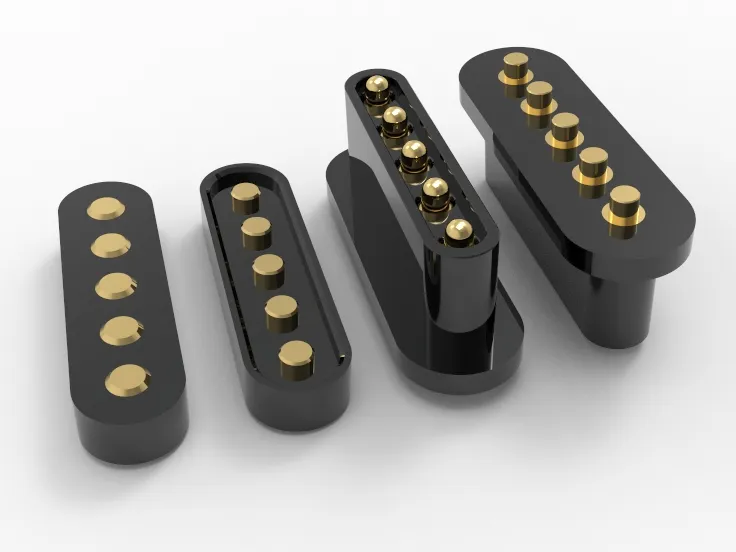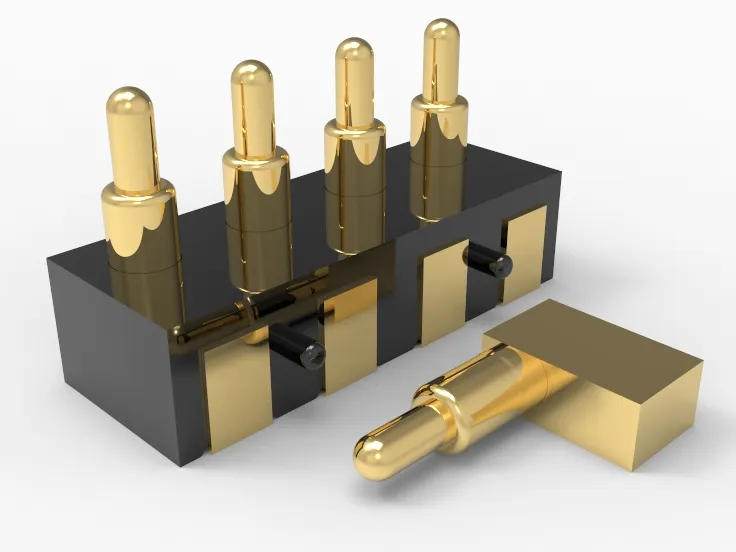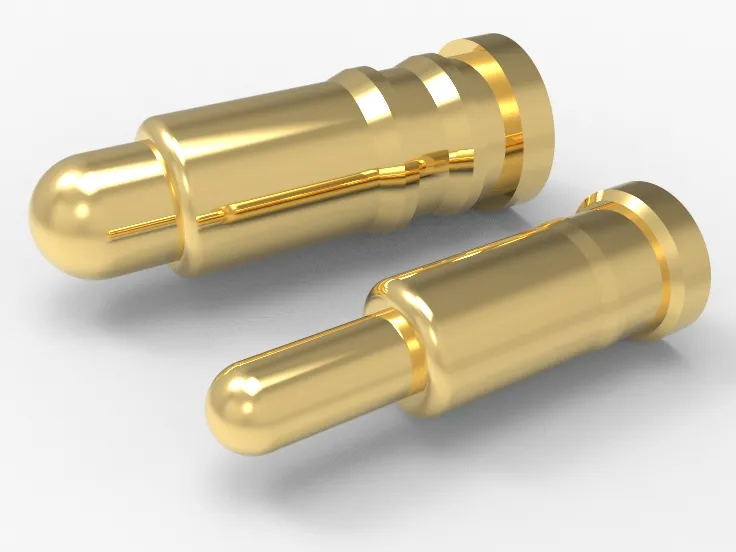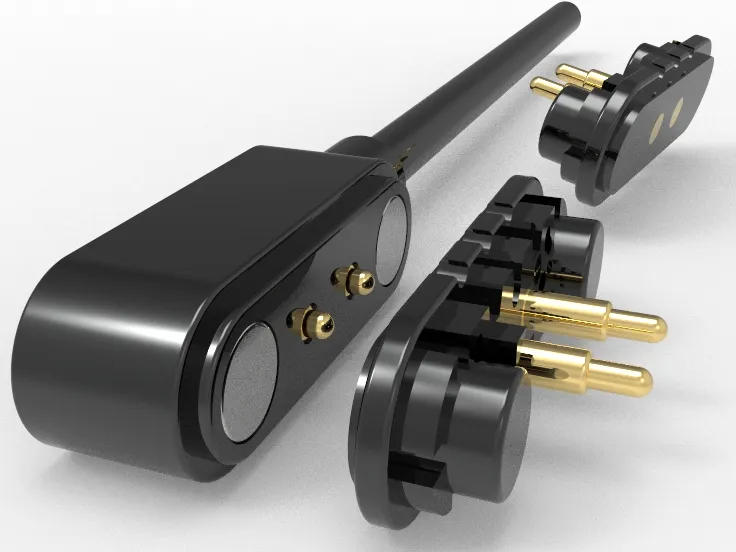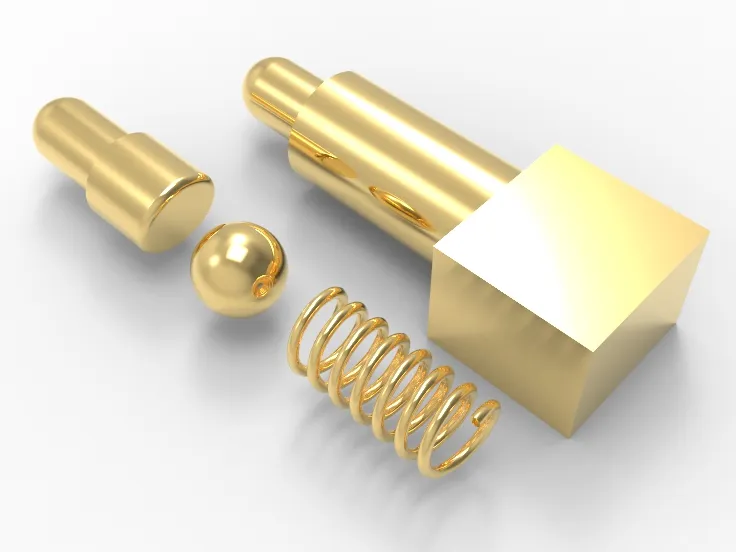How do Pogo Pins perform in high-vibration environments? This article explores their design, materials, and testing standards for stable connections.
Introduction:
In today’s rapidly advancing technological landscape, electronic devices are increasingly used across a variety of sectors, especially in industries that demand highly reliable connections, such as automotive, aerospace, and industrial automation. In these environments, the stability and durability of connectors are crucial factors that determine the overall performance of the equipment.
These connectors are engineered to handle intense shaking and jarring, making them perfect for demanding environments. This article will delve into how do Pogo Pins perform in high-vibration environments, providing relevant data to support our findings.
Basic Structure and Operating Principle of Pogo Pins
Pogo Pins are composed of a metal pin and a spring, typically designed in a cylindrical or conical shape. The spring enables a dynamic mechanical connection between the contact surfaces of the Pogo Pins. When vibrations occur, the spring can absorb a certain amount of shock, thereby maintaining the stability of the electrical connection.
How do Pogo Pins perform in high-vibration environments? The key lies in the design of the spring, which can adjust its compression state based on the frequency and amplitude of the vibration, effectively reducing the risk of poor contact.
The Impact of Material Selection
Opting for high-quality materials ensures reliability and longevity, even under challenging conditions. High-quality metals such as nickel, gold, and palladium enhance the conductivity and durability of Pogo Pins. Research indicates that gold-plated Pogo Pins can maintain over 90% conductivity in high-frequency vibration scenarios.
Data shows that Pogo Pins made from alloy materials can retain more than 95% contact reliability even after 100 hours of high-vibration testing. This serves as another testament to how do Pogo Pins perform in high-vibration environments, ensuring that connectors remain stable even under extreme conditions.
Design Optimization
The design of Pogo Pins encompasses not only material selection but also the mechanical properties of the spring. Studies suggest that optimal spring stiffness and preload can significantly enhance the performance of Pogo Pins in vibrating conditions. Specifically, the stiffness of the spring should be adjusted according to the vibration frequency of the device to ensure stable contact pressure under various conditions.
For instance, a particular brand of Pogo Pins exhibited outstanding performance in high-frequency vibration tests (frequency up to 100 Hz, amplitude of 0.5 mm), with a contact resistance change of no more than 20%. This is a key factor in answering how do Pogo Pins perform in high-vibration environments, guaranteeing reliability even in extreme situations.
Testing Standards and Certifications
To ensure that Pogo Pins perform well in high-vibration environments, many manufacturers adhere to strict testing standards, such as MIL-STD-810. This standard requires Pogo Pins to undergo multiple tests under various vibration frequencies and amplitudes to verify their performance stability.
For instance, in a test conducted for aerospace applications, Pogo Pins maintained a contact resistance change of less than 10% after 24 hours of continuous vibration. This high level of stability effectively demonstrates how do Pogo Pins perform in high-vibration environments, making them widely used in critical applications.
Broad Range of Applications
Pogo Pins find extensive use across various industries, particularly in environments that must withstand high levels of vibration. For example, in automotive electronics, Pogo Pins are commonly employed in in-vehicle entertainment systems and navigation devices. In the aerospace industry, Pogo Pins play a vital role in linking flight control systems and various instruments.
In these applications, the vibration-resistant characteristics of Pogo Pins make them an ideal choice. For instance, in a premium car navigation system, Pogo Pins can effectively reduce signal loss caused by vibrations, enhancing the user experience. This serves as a prime example of how do Pogo Pins perform in high-vibration environments, showcasing their significance in real-world applications.
Importance of Maintenance
While Pogo Pins are designed to withstand high-vibration conditions, regular maintenance is crucial for ensuring their long-term reliability. Users should routinely check the contact surfaces of Pogo Pins to prevent the accumulation of dust, dirt, and corrosion.
Industry standards recommend performing maintenance on Pogo Pins in high-vibration environments every three months. This maintenance includes cleaning the contact surfaces, checking the condition of the springs, and ensuring secure installation. By following these practices, how do Pogo Pins perform in high-vibration environments? Regular maintenance and inspections can maximize their performance and lifespan.
Application of New Technologies
As a result, Pogo Pins are now more reliable than ever, meeting the demands of various high-performance applications. For example, cutting-edge surface treatment technologies can significantly improve the wear resistance and conductivity of the contact surfaces.
In one study, Pogo Pins with a new type of coating showed a contact resistance change of less than 5% after high-vibration testing. This demonstrates that the application of new technologies is crucial for improving Pogo Pins’ performance in high-vibration environments, further clarifying how do Pogo Pins perform in high-vibration environments.
Future Development Trends
Looking ahead, Pogo Pins will continue to innovate in design, materials, and manufacturing processes to meet the increasingly complex demands of high-vibration environments. With improved quality control, manufacturers can ensure that every Pogo Pin meets high standards, leading to more reliable products for customers.
By 2025, the market for high-performance connectors is expected to grow by 20%. Consequently, Pogo Pins are positioned to play a crucial role in supporting advancements in these high-tech fields. How do Pogo Pins perform in high-vibration environments? Ultimately, the future offers a chance for innovation and progress, making it an exciting time for those in the field.
Customer Feedback and Product Improvement
Customer feedback is crucial for the design enhancements of Pogo Pins. By gathering real-world experiences from users in high-vibration environments, manufacturers can continually refine product designs and material selections.
For instance, one customer encountered contact issues at specific frequencies while using Pogo Pins. In response to this feedback, the manufacturer adjusted the spring stiffness, which significantly improved the product’s reliability. This case exemplifies the process of how do Pogo Pins perform in high-vibration environments and provides valuable insights for future product improvements.
Conclusion
In summary, Pogo Pins effectively tackle high-vibration environments thanks to their intricate design, high-quality material selection, appropriate installation methods, and rigorous testing standards. As technology continues to advance, Pogo Pins will play an increasingly vital role in more demanding applications, fulfilling customer needs.
How do Pogo Pins perform in high-vibration environments? Through ongoing innovation and improvement, Pogo Pins will offer even more reliable solutions, establishing themselves as the top choice for connectors in high-vibration conditions.









